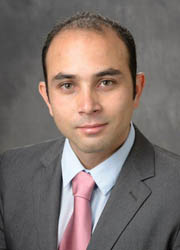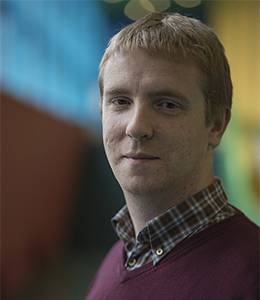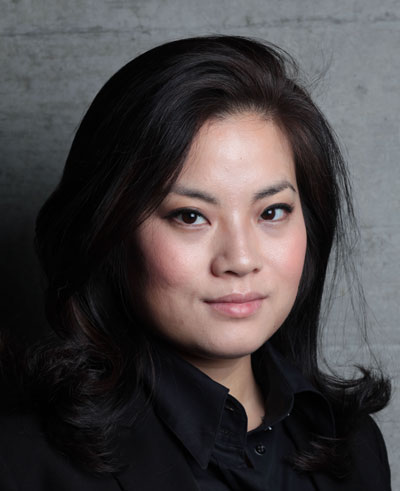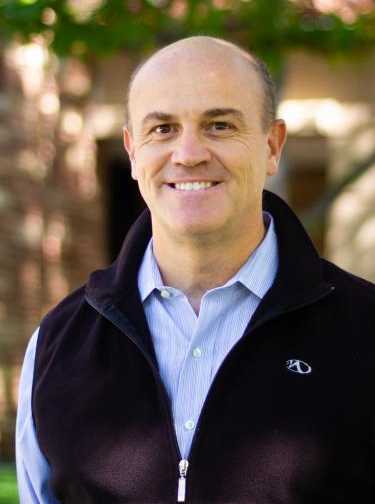Keynote Speakers
The keynotes will address the main topics of the conference; Dynamic systems & vibration control, smart structures & materials, shape adaptation, and emerging technologies
Prof. Andres Arrieta
Purdue University
Andreas Arrieta received his PhD from University of Bristol and he is now an assistant professor of mechanical engineering at Purdue University. His research at the Programmable Structures Lab focuses on the fundamental interaction between geometry, hierarchy and nonlinearity to design structural systems with intrinsic properties enabling adaptation, autonomy and environmental responsiveness.
Acoustic metamaterials aim to disrupt materials design by relying on engineered unit cells and their connectivity yielding unconventional properties. However, the attainable dynamic properties are strongly dependent on the size of the unit cells, restricting the effective behavior to narrow, high frequencies bands or resulting in large arrangements. This is due to the nature of band gaps from local resonance or scattering, both of which are strongly related to the size (mass) and stiffness of unit cells. Therefore, the unit cell geometry dictates the frequency range at which the desirable unconventional properties of current metamaterials can be attained. Despite efforts to translate the exciting properties of acoustic metamaterials to low-frequencies (well below <1 kHz), novel mechanisms to exhibit dynamics independent of the unit cell's size are still needed to exploit the potential of metamaterials fully. Many structural applications, including those in aerospace, civil, robotic, and automotive industries, require lightweight, stiff, and high damping materials; however, most kinetic energy is concentrated in the structural frequency range (<1 kHz) and are wideband in nature, rendering the use of Bragg scattering and local resonance for wave manipulation difficult. Therefore, there exists a need to discover mechanisms allowing broadband application of dynamic properties for metamaterials. A promising approach to realize metamaterials is to leverage the interactions between strongly nonlinear waves that exhibit particle-like behavior and structures. Topological solitons or transition waves are one such type of wave displaying non-dispersive and spatially localized propagation characteristics that switch the state of a lattice's unit cells, akin to travelling dislocations in solids or falling dominoes.
This keynote presents a class of multistable metastructures displaying strong nonlinear interactions between propagating transition waves and structural modes. We demonstrate two different types of dynamics dominated by the propagation of transition waves on the metastructures. First, we show how transition waves excite the same type of response in the metastructure’s unit cells regardless of the input excitation. This invariant unit cell response allows for efficient electromechanical energy transduction as the mechanical response can be tuned to electrical conversion circuits robustly. Secondly, we show that soliton-structural mode interactions lead to a new dynamic phenomenon—refer to as solitonic resonance—allowing multistable metastructures to exhibit extreme input-output energy exchange. Specifically, our multistable metastructures transform input frequencies into output responses separated by orders of magnitude. Notably, the presented metastructures break the dependence of the attainable unconventional dynamical properties on the unit cell's size. Thus, we provide a general model system that can accelerate the adoption of metamaterials in engineering applications, particularly addressing the structural bandwidth.
Prof. Roeland de Breuker
TU Delft
Roeland De Breuker received his BSc, MSc and PhD from the Delft University of Technology. He is leading a research group of 2 post-docs, 10 PhD students and 15 MSc students in the field of aeroelasticity and adaptive structures. He is active in multiple EU and Dutch national projects, as well as in projects which are directly funded by aerospace industries. He specializes in innovative structural concept generation, model development, multi-disciplinary optimisation, (international) collaboration, project management.
Prof. Jamie Paik
EPF Lausanne
Prof. Jamie Paik is founder and director of the Reconfigurable Robotics Lab (RRL) of Swiss Federal Institute of Technology (EPFL) and a core member of Swiss NCCR robotics group. The RRL leverages expertise in multi-material fabrication and smart material actuation for novel robot designs. She received her PhD in Seoul National University on designing humanoid arm and a hand while being sponsored by Samsung Electronics. Her latest research effort is in soft robotics including self-morphing Robogami (robotic origami) that transforms its planar shape to 2D or 3D by folding in predefined patterns and sequences, just like the paper art, origami.
Prof. Massimo Ruzzene
Boulder University
Massimo Ruzzene is the Slade Professor of Mechanical Engineering and holds a joint appointment in the Smead Aerospace Engineering Sciences Department of CU Boulder. M. Ruzzene currently serves as the Associate Dean for Research of the College of Engineering and Applied Science. He joined CU in the summer of 2019, after serving as the Pratt and Whitney Professor in the Schools of Aerospace and Mechanical Engineering at Georgia Institute of Technology.
Surface curvature is explored as a largely unexplored route for the design of topological mechanical metamaterials and waveguides. Curvature as a design parameter is first investigated in the context of periodic minimal surfaces, which provide a platform for topological mechanical metamaterials. We specifically illustrate configurations of 1D and 2D lattices dimerized through parametrizations that systematically break spatial symmetries, and that form the bases for opening non-trivial band gaps and for introducing interfaces that support topological valley modes. Their existence is illustrated through vibration and wave propagation experiments conducted on additively manufactured minimal surface samples, which illustrate the confinement of topologically protected edge states along engineered interfaces, and confirm the lack of significant backscattering at sharp corners. This study supports the vision of minimal surfaces as a general framework where geometrical modulations and symmetries can be introduced to achieve novel and unusual mechanical and acoustic functionalities.
In the second part of the talk, curvature is explored as a mean to induce spatial variations of the effective refractive index of waveguides. Graded refractive index distributions usually requires the use of metamaterials, which pose manufacturing challenges, and introduce bandwidth limitations. It is here shown that the effect of a variable refractive index is equivalently achieved by warping the waveguide in space. We specifically illustrate how elastic waves can be manipulated through curved surfaces characterized by generic Gaussian curvature distributions. By operating within the short wavelength limit, we show that homogeneous curved waveguides can be designed by relating the refractive index to the Gaussian curvature. Consequently, the wave trajectories can be predicted by means of geodesic analysis of the surface followed by a classical ray tracing approach. Our theoretical predictions are validated by experiments conducted on additively printed curved waveguides which demonstrate how spatial curvature can be used for wave guiding and focusing using simple, and possible reconfigurable, structural configurations.



